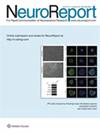危险程度和危险位置对交通危险感知的影响:一个ERP研究
IF 1.6
4区 医学
Q4 NEUROSCIENCES
引用次数: 3
摘要
目的探讨交通危险程度和位置对神经反应过程的影响。方法要求26名汽车驾驶员观看图片,并在与交通无关的图片上按下按钮。记录和分析脑电对交通相关图像的反应。结果中央视觉区对N100分量的影响大于周边视觉区,且不同危险程度的变化趋势一致。中央视觉区的危险也比周围视觉区的P200分量的振幅更大。此外,当危险出现在中央视觉区(0°)时,低危情境诱发的P200振幅小于高危情境。当危险出现在周边视觉区(7°)时,低危情景诱发的P200振幅大于高危情景。最后,危险存在诱发周边视觉区P300振幅大于中央视觉区,低危险情境下P300振幅大于高危险情境。结论在自动知觉早期,危险更容易在中央视觉区加工。在后期危害评价阶段,中心视区的危害和高危害情况更容易处理。本文章由计算机程序翻译,如有差异,请以英文原文为准。
The effect of the degree and location of danger in traffic hazard perception: an ERP study
Objectives The aim of this study is to explore the influence of the degree and location of the danger of traffic hazards on the neural reaction process. Methods 26 automobile drivers were asked to look at the pictures and press buttons on the pictures unrelated to traffic. Electroencephalography responses to traffic-related images were recorded and analyzed. Results It was found that danger in the central visual region induced a larger amplitude of the N100 component than in the peripheral visual region and the trend of different hazard levels was consistent. The danger in the central visual area also induced a larger amplitude of the P200 component than in the peripheral vision area. In addition, when the danger appeared in the central visual area (0°), the P200 amplitude induced by the low-hazard situation was smaller than that of the high-hazard situation. When the danger appeared in the peripheral visual area (7°), the P200 amplitude induced by the low-hazard situation was larger than that of the high-hazard situation. Finally, the presence of danger evoked a larger amplitude of the P300 component in the peripheral visual area than in the central visual area and the P300 amplitude was larger in the low-hazard situation than in the high-hazard situation. Conclusions The results suggest that hazards are more easily processed in the central visual area during the early stage of automatic perception. In the later hazard evaluation stage, the hazard in the central visual area and the high-hazard situation were more easily processed.
求助全文
通过发布文献求助,成功后即可免费获取论文全文。
去求助
来源期刊

Neuroreport
医学-神经科学
CiteScore
3.20
自引率
0.00%
发文量
150
审稿时长
1 months
期刊介绍:
NeuroReport is a channel for rapid communication of new findings in neuroscience. It is a forum for the publication of short but complete reports of important studies that require very fast publication. Papers are accepted on the basis of the novelty of their finding, on their significance for neuroscience and on a clear need for rapid publication. Preliminary communications are not suitable for the Journal. Submitted articles undergo a preliminary review by the editor. Some articles may be returned to authors without further consideration. Those being considered for publication will undergo further assessment and peer-review by the editors and those invited to do so from a reviewer pool.
The core interest of the Journal is on studies that cast light on how the brain (and the whole of the nervous system) works.
We aim to give authors a decision on their submission within 2-5 weeks, and all accepted articles appear in the next issue to press.
 求助内容:
求助内容: 应助结果提醒方式:
应助结果提醒方式:


